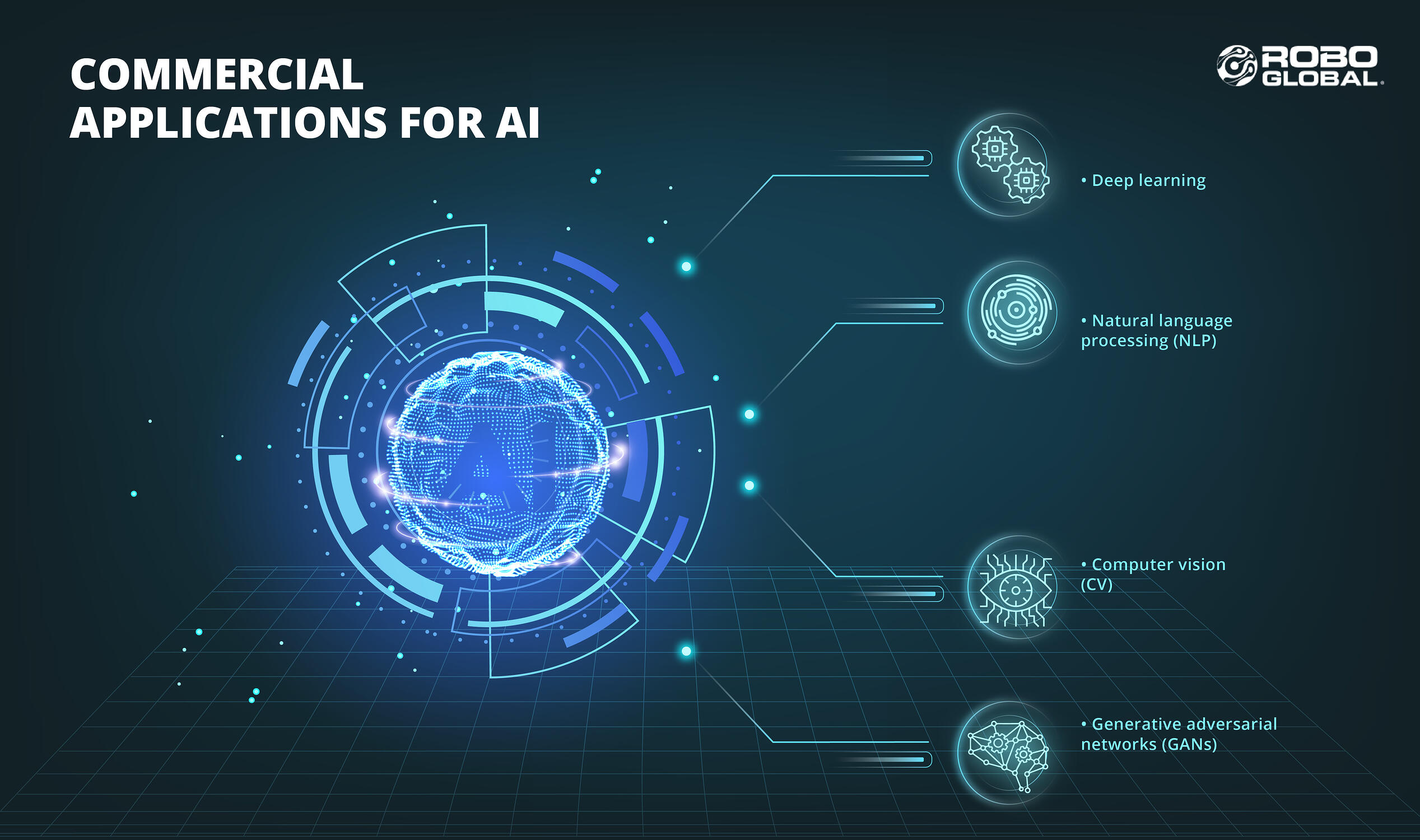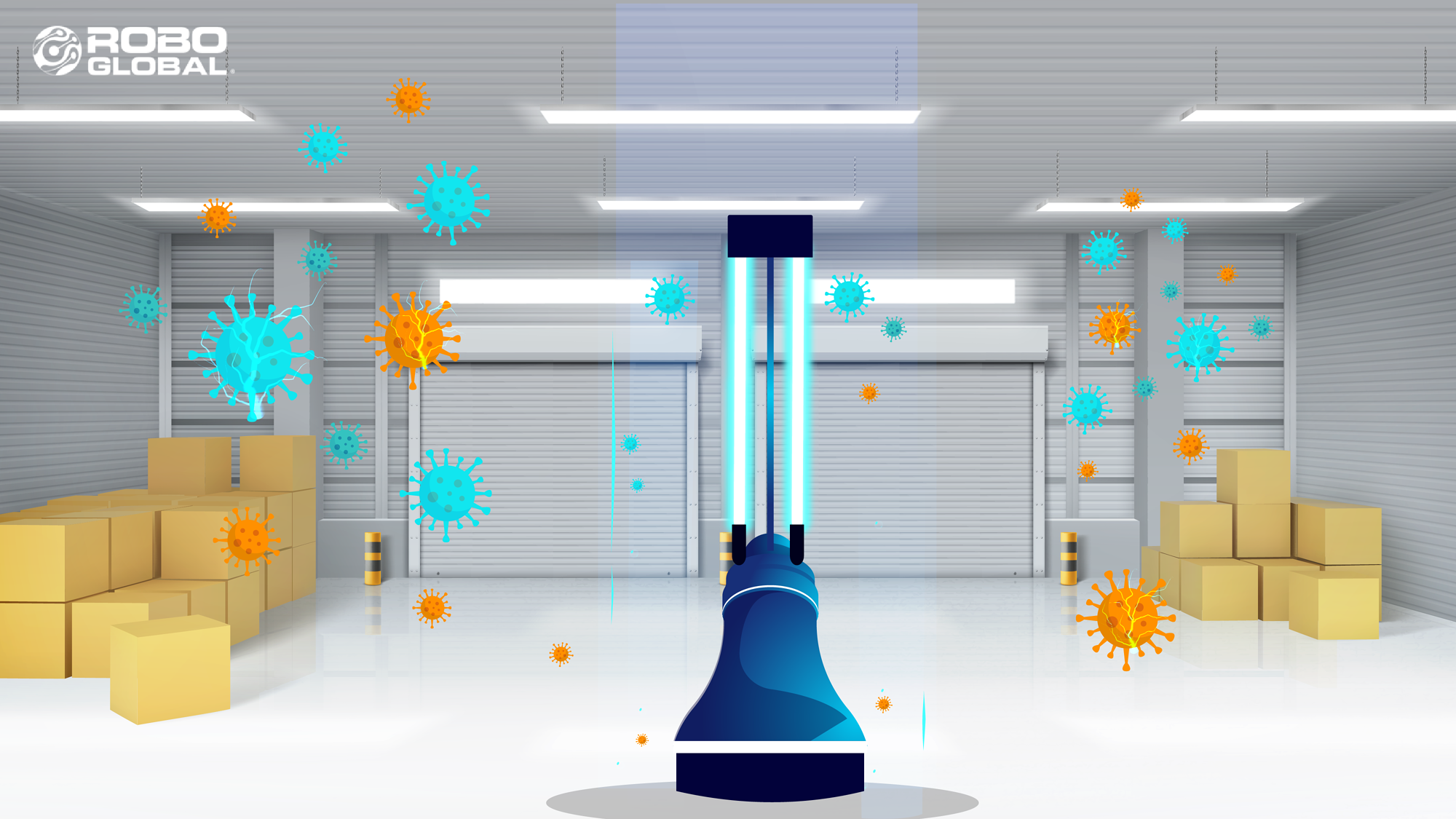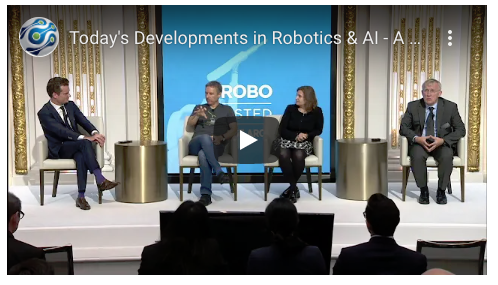Jeremie Capron, director of research, and Lisa Chai, senior research analyst, had the opportunity to sit down with our ROBO Global strategic advisor Professor Daniela Rus, the director of MIT's Computer Science and AI lab, and a member of the National Academy of Engineering and the American Academy for Arts and Science.
Together, they discuss the future of investing in AI and robotics, diving into the ways that technology is transforming the economy, and how investors can capitalize on these trends. Here is a transcript of the entire Q&A on the developments across AI with Prof. Daniela Rus:
GROWTH POTENTIAL ACROSS AI & COMPUTING
Jeremie Capron, Director of Research at ROBO Global: The recent developments across AI & computing, we believe, are really powered by convergence of a number of key enabling technologies. What do you think are some of the highlights there? What enabling technologies have come to the forefront in recent years to open this range of possibilities?
Prof. Daniela Rus, Director of MIT's Computer Science and AI Lab: I think that it's an extraordinary time where we’re seeing so much progress in AI and computing. This progress is accelerating. We've already seen much better computing platforms, a necessary upgrade—everything that requires reasoning, requires computation. We have seen the ability to generate data. We have seen more reliability and a wider range of hardware components necessary to think about different machines. But we have also seen tremendous progress on the algorithmic side, on the science side.
We have seen solutions for map making, localization, and path planning. This is enabling the progress in transportation. We have seen automatic design and rapid fabrication technologies along with control technologies. This is enabling progress in manufacturing. We have seen tremendous progress in machine learning, and particularly in deep learning. And this is enabling progress in how we handle data, in how we learn what happened in the past, what happens now in the future based on what happened in the past, and what we might do. And this has a wide range of application to many different industries and sectors where there is data available and there is the possibility of improving operations using these types of questions. And the natural language explosion—our enhanced understanding of how to do language understanding and how to do object recognition—is really powering a wide range of applications.

JC: Is quantum computing something you see coming through in the near-term? Clearly, we've made some tremendous progress in terms of computing—is quantum something that we can and should count on in the near-term?
DR: Quantum computing is definitely an industry of the future. It's sort of challenging. We're not there yet, but we're making progress. The biggest challenge is that it's hard to build large-scale machines. We have a lot of interesting algorithms, so in theory, once we have quantum machines, we will be able to do a lot of things because we have good algorithms. But in practice, the machines are small. They have on the order of 80 to 100 cubits. And there's only so much that can be computed on 80 to 100 cubits. So I would say that quantum is definitely one of the industries of the future, but we don't have products today.
Let me take it one step at a time. With respect to making the diagnosis industry more automated, I think that this is absolutely a possibility for the future. And, in fact, there are many efforts to bring machine learning to the diagnostics industry. What's really extraordinary is that with machine learning systems, we can flag patterns. We can identify subtle patterns that are difficult for humans to see. And sometimes by identifying those subtle patterns, we can alert humans of problems even before those problems occur.
For instance, in the medical industry, by looking at the video of a surgical operation, the system can actually identify really tiny features that map into the possibility of a blood vessel exploding, bursting, rupturing. And by giving the surgeon just a few seconds advance notice, that can make surgery better. The same idea can be applied to diagnostics, where by monitoring the health of the equipment, by monitoring a lot of data about how equipment functions, we can get early warnings that something might go wrong. And those warnings could also be classified and categorized. So I'm very excited about automation for the diagnostics industry for manufacturing. I'm also very excited about automation for the diagnostics capabilities in the medical sector.
JC: Lisa, can you comment on how we build investment exposure to these very enabling technologies in the ROBO and THNQ indices?
Lisa Chai, Sr. Research Analyst at ROBO Global: Our investment strategies are aimed to capture the entire value chain of robotics in AI with a key emphasis on innovative solutions, for example, companies that are enabling the digital transformation like chip processing companies. These are stocks like NVIDIA, Xilinx, and ASML, as well as companies like Materialize, a Belgium-based company with three decades of 3D printing experience, helping the manufacturing sector accelerate research and development, get the products out more efficiently, and improve ROI at the same time.
ROBO and THNQ also include the infrastructure software companies like ServiceNow and Alteryx powering up AI engines for inner prices to get intelligent insights and enhance productivity. We capture that exposure of technology enablers in various ways.
It’s also important to highlight the companies that are leveraging AI. Our investment portfolios provide exposure to companies that are building AI capabilities by growing their AI teams, which is very important.
Companies in the e-commerce subsector—for example, you'll find companies such as Shopify and Wix—are empowering small businesses to build their online presence. And companies like Ocado, the largest online grocer in the UK, is transforming the logistics sector with its innovative robotic solutions using pretty sophisticated AI algorithms today. So the e-commerce subsector obviously has been by far one of the top performing subsectors for us year to date.
COVID-19 & TECHNOLOGY ACCELERATION
JC: It's fair to say that from an investor's perspective, the pandemic has created significant dislocations in the market. However, the overwhelming conclusion from the market so far is that we've seen a turbo charging of the digitization of the economy. And the companies that are powering this digitization have generated extraordinary terms in the market. The investors have flocked toward the enabler of the from-home world, be it learning, or working, or simply staying home.
What really stands out in terms of the impact of the pandemic on the world of robotics and AI so far?

DR: I'm going to quote Satya Nadella, who said, "We have seen two years’ worth of digital transformation in two months as a result of the pandemic." So at some level, the pandemic has really forced everyone to get empowered with technology, with digital tools. And that is a good thing for society, because that means we have many more people who are educated and who are not scared of using technology, and who will be adopters of new possibilities, of new activities. We have also seen so much progress in many aspects around the pandemic.
Let me start by the “doing good" part. We've just seen announcements of two vaccines, two effective vaccines. And I would like to say that this extraordinary rapid evolution from needing a vaccine to having a vaccine has been enabled by AI and machine learning because, with these tools, we're able to search and generate so many more possibilities and combinations that are very difficult to do in a physical setting. So machine learning has helped us get to the point where we're going to have vaccines.
We also see the use of robots in creating UVC disinfecting machines that helped keep spaces safe, in creating equipment for hospitals, in creating low-cost broadly available ventilators. So the community, the robotics community, has already contributed to making the world safer at this critical time with the pandemic.
At the same time, we have also seen results that are empowering various other industry sectors. So we see more of a desire to adopt routing algorithms that will create more efficient mobility on demand for people, safe transportation. And, in fact, the company from MIT called the Routable Company is promoting a very efficient algorithm that is bringing this digitization and enabling activities to transportation. We have seen in the e-commerce sector, we see so much activity where we need to route goods to people. People are no longer going to stores; they want the stores to come to them. We don't yet have robots that will bring us our goods, but I imagine that before too long we will have those robots. In the meantime, we have machine learning and AI algorithms who are powering the extraordinary efforts in delivery.
I read that Carrefour and other companies are turning their physical stores into warehouses because that is what is needed now. So we see an extraordinary transformation. Ocado is one of the companies leading this transformation. Ocado recently acquired Kindred AI to enable even finer control of how they might use robots to do food packaging for deliveries. And so I'm very excited about the possibilities.
JC: Logistics automation has really been a standout for us not only during these pandemic times, but also in recent years. In fact, Logistics Automation has been the best performing subsector of the ROBO index since its creation. And the companies like Ocado on the grocery handling and the order fulfillment systems are some examples, but there are many other automation equipment and solutions providers around the world from Japan to Germany to here in the US that have been great investments so far.
Lisa, continuing on that theme, what are you hearing from the ROBO and THNQ index member companies in terms of how the pandemic has altered their business trajectory?
LC: Many companies called out the massive acceleration tech spending from prices of all sizes related to that digital transformation initiative. I think the companies were seeing the strength coming from the initiatives pre-COVID, but the pandemic has rightly caught many of the management team by surprise, and many of them feel they weren't prepared. So we saw the surge of spending occurring in cloud-enabled services. And this isn't just the hardware spending, but also software spending.
To the extent that we believe that the migration to the cloud will continue post-COVID, we expect that spending around AI will only accelerate. I think that if I can make a prediction that just from looking at earnings results you could see the bookings numbers, the visibility for the next several quarters is very strong. And the management team has confidence around their business right now. So you're seeing increasing spending in CapEx and R&D, especially around AI capabilities, and that gives us some confidence that they are seeing some business flowing through. They're trying to use this time to strengthen their technology capabilities for possibly the next pandemic or to get ahead in the digital transformation initiatives.
JC: Daniela, which robotic AI solution that has emerged due to COVID-19 do you find to be the most exciting?
DR: We've contributed a number of solutions from MIT. And I find all of those ideas really important. The notion that cleaning might change to touchless operations, I think that's really extraordinary. That might bring travel and the transportation industry back to full action. The fact that we have contributed as a community to the development of therapeutics and of vaccines—this will keep the world's population safe. I think that's really extraordinary. And then a lot of other contributions have been made on the side of clinical operations.
Before COVID, primarily there was one type of mask, this N95 mask, which I have next to my desk at all times. But MIT faculty have reinvented masks, have begun to innovate in creating more effective tools for people and for hospital workers. You can imagine another technology that I think is really extraordinary and that has begun to be used in hospitals, it's touchless diagnostics. It's the idea that you can send a robot in the room of a hospitalized patient, and you can collect a lot of data about that patient without the need of a nurse to be right there physically interacting with a patient. So this can make hospital operations much safer for everyone.
Between helping to deal with the situation now, helping to do prevention activities like UVC disinfection, and helping to eradicate the disease, like the work in vaccines, I think that the AI, machine learning, and robotics communities have risen to the occasion and have really given to the world. And I'm so excited to be part of some of those activities.
EDUCATION IN AI & COMPUTING
JC: You being on the education side of the AI industry, can we touch on the availability of talent? We hear from a lot of our index companies that they face challenges in terms of attracting and retaining AI talents. I've heard about a new initiative at MIT at the College of Computing. Can you touch on that, and how we can start expanding the training and education to attract more talent?

DR: We don't have enough talent, and that's why MIT is rethinking education and how to create programs that would empower students to know the tools of AI, statistics, and computation no matter what their specialty or field. If you think about it, the ability to be fluent in AI and computing is important in just about any field or industry sector.
That doesn't mean that everyone needs to become a specialist in AI or in computer science, but rather that they should understand the tools. The tools to AI should be a part of literacy, understanding how to use AI, computer science, and programming just like we know how to read and write.*
At MIT, we see a great need for knowledge in these spaces, and we have recently launched the Schwarzman College of Computing. The mission of the Schwarzman College of Computing is to advance computing as a discipline, to advance computing across disciplines. That means empowering students in other disciplines with the right tools, and also to be responsible about how we use and how we innovate in computing. These are three very important pillars to be considered in anything we do right now, frankly, because we need to continue to advance computing. We need to be able to connect and empower other disciplines. But then we need to do that in a way that is responsible. Disruption without that responsibility could lead to bad consequences for the planet, so keeping in mind the impacts of the new tools and of how those tools are used is very important.
Related: Reimagining the Future of Online Grocery
*All opinions are of Daniela Rus, and should not reflect the MIT official position.



